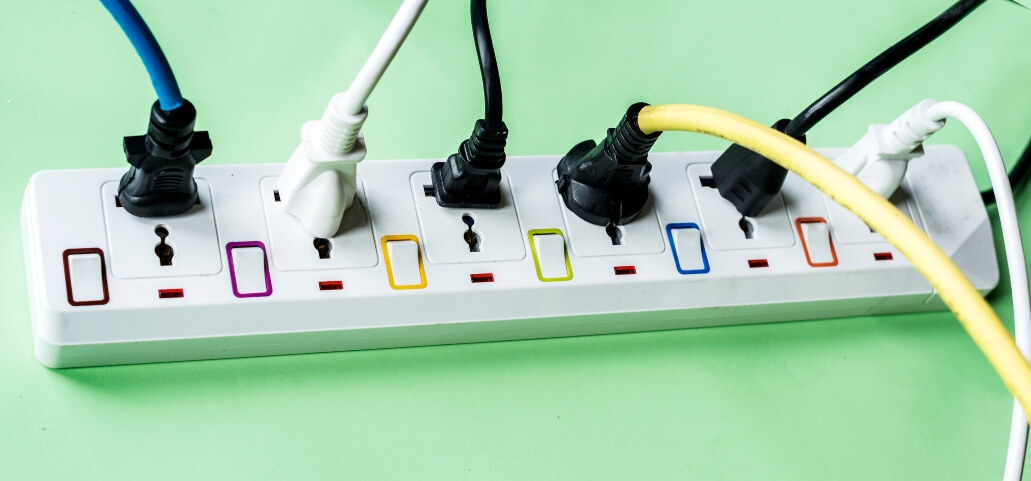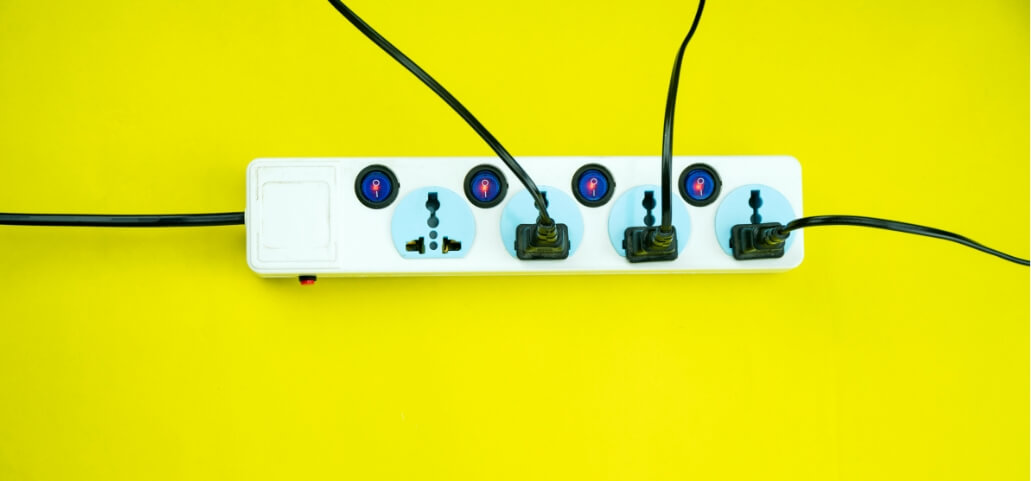Have you ever had the terrifying experience what happens if you spill water on a power strip? As you hurry to disconnect everything, panic sets in. But have you ever thought about what happens if you spill water on a power strip? In this article, we will dive into the shocking truth behind spilling water on a power strip and explore the potential risks and precautions you should be aware of. So, let’s plug in and uncover the mysteries!
Understanding to What Happens If you Spill Water on a Power Strip
Before we delve into the effects of water on power strips, let’s first understand what power strips are and how they work. Power strips are convenient devices that allow multiple electronic devices to connect to a single power outlet. In order to guard against electrical overloads, they usually have a circuit breaker and many outlets. While power strips are designed to distribute electricity safely, they are not impervious to the hazards that water can pose.
The Dangers of Water and Electricity

Water and electricity are harmful when combined, as we all know. Water is a conductor, meaning it allows electricity to flow through it. A potentially fatal condition can arise when water and an electrical current come into contact. Water can result in electrical shocks, sparks, short circuits, and even fires. It is essential to comprehend these risks if you want to safeguard your equipment and yourself.
Effects of What Happens if you Spill Water on a Power Strip
Depending on the quantity of water, the length of exposure, and the particular conditions, a power strip submerged in water may experience a variety of consequences. Common effects of water spillage on a power strip include:
- Short Circuits: Water can create a path for electricity to bypass the intended circuit, leading to a short circuit. This may trip the circuit breaker or result in a malfunctioning spill water on a power strip.
- Sparks and Fires: If water reaches exposed electrical components within the power strip, it can result in sparks or, in worst-case scenarios, fires. The combination of electricity and water can ignite flammable materials and pose a significant risk to your safety.
- Electrical Shock: Spill water on a power strip increase the likelihood of electric shock when touching the strip or any connected devices. The intensity of an electrical shock can vary, causing little pain or serious harm based on the voltage and current applied.
Steps to Take After Spill Water on a Power Strip
What happens if you spill water on a power strip, it’s crucial to act swiftly and take these immediate steps:
- Turn Off the Power: Unplug the power strip from the wall outlet or turn off the circuit breaker associated with it. This will lessen the chance of electrical shock or other harm.
- Dry the Power Strip: To carefully remove any visible water from the power strip, use a dry cloth or towel. Be cautious not to touch any exposed electrical components while doing so.
- Allow Sufficient Drying Time: To make sure the power strip is totally dry before plugging it back in, place it in a well-ventilated location for at least 24 hours after wiping off the water.
Prevention Tips to Avoid Accidents for Spill Water on a Power Strip
As usual, prevention is preferable to handling the fallout. In order to assist you avoid spill water on a power strip, consider the following crucial advice:
- Keep Liquids Away: Keep water and other liquids at a safe distance from your power strips and electronic devices. Be mindful of their placement and avoid placing drinks or vases near them.
- Use Waterproof Covers: Think about using enclosures or waterproof coverings made especially for spill water on a power strip. These coverings offer an extra defense against unintentional spillage.
- Secure Cables: Arrange and secure cables properly to minimize the risk of accidental tugs or spills. Utilize cable ties or clips to neatly and conveniently conceal cables.
- Opt for Ground-Fault Circuit Interrupter (GFCI) Outlets: In places where water is prevalent, such as bathrooms and kitchens, GFCI outlets are intended to prevent electrical shock. Consider installing GFCI outlets near water sources to enhance safety.
Potential Hazards of Water Spillage

Understanding the potential hazards associated with what happens if you spill water on a power strip can help you appreciate the importance of taking precautions. The following are some hazards to be mindful of:
- Fire Hazards: The combination of water and electricity can create sparks or ignite flammable materials, leading to fires that can cause property damage and endanger lives.
- Electrical Shock: Water spillage can increase the risk of electrical shock, which can cause injuries ranging from mild to severe, depending on the voltage and duration of exposure.
- Damage to Electronic Devices: Water can cause irreparable damage to electronic devices connected to a power strip. The need to replace pricey equipment or make expensive repairs may arise from this damage.
Safety Precautions
Safety measures to ensure your safety and electrical gadget durability:
- Keep Power Strips Elevated: Elevate power strips off the floor or ground to minimize the risk of water coming into contact with them in case of spills or leaks.
- Regularly Inspect Power Strips: Make it a habit to regularly inspect power strips for damage, such as frayed or exposed wires. To prevent any dangers, replace the power strip right away if you find any problems.
- Avoid Overloading Power Strips: Plugging in too many gadgets at once can overload power strips and cause malfunctions and overheating. Follow manufacturer guidelines for load capacity to ensure safe usage.
- Educate Household Members: Teach others in your household about the risks associated with water and electricity. Encourage everyone to be mindful of where they place liquids and the importance of immediate action in case of spills.
Conclusion
What happens if you spill water on a power strip can have serious consequences, ranging from malfunctions to electrical shocks and even fires. It’s critical for both your safety and the security of your electronics to be aware of these threats and to take the appropriate safety measures. Remember to keep liquids away from power strips, invest in waterproof covers if needed, and promptly respond to any spills to minimize potential hazards.
By following these guidelines and staying vigilant, you can enjoy the convenience and benefits of what happens if you spill water on a power strip while ensuring a safe and secure environment in your home or workspace. Stay cautious, stay safe!
Frequently Asked Questions
Q1: Can I use a wet cloth to clean my power strip?
Answer: No, it is not safe to use a wet cloth to clean a power strip. Prior to cleaning, make sure the power strip is always disconnected and totally dry.
Q2: How often should I inspect my power strip for damage?
Answer: Checking your power strip for damage is advised at least once every three months, or if you see any wear or fraying.
Q3: Can I use a power strip outdoors?
Answer: Standard power strips are not designed for outdoor use. If you need power outlets outside, you might want to use outdoor-rated power strips that are specifically designed to withstand outdoor conditions.
Q4: Are power strips fire hazards even without water spills?
Answer: Power strips can pose fire hazards if overloaded or used improperly. It is important to follow the manufacturer’s guidelines for load capacity and avoid overloading power strips to reduce the risk of fires.
Q5: If I am shocked by electricity when using a power strip, what should I do?
Answer: Seek emergency medical assistance if a power strip shocks you electrically. It is also important to have the power strip inspected by a professional to ensure its safety before using it again.
Disclaimer: This blog article is meant for educational purposes only; it is not advice from a professional. For any particular electrical questions or concerns, always seek the advice of a licensed electrician or other specialist.
End of Document:
Thank you for reading this document on the potential hazards of water spillage on power strips and the necessary precautions to ensure safety. We hope that this information has been helpful in raising awareness about the risks and promoting safe usage of power strips. Keep in mind that preventing accidents or damages early on is always preferable to dealing with them later. Remain safe and alert!

